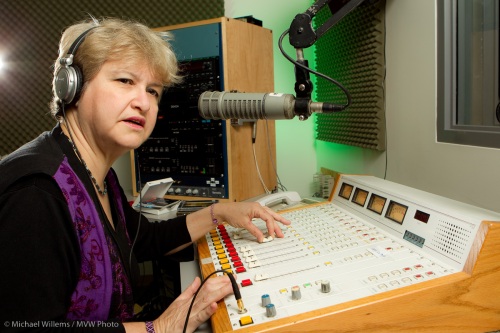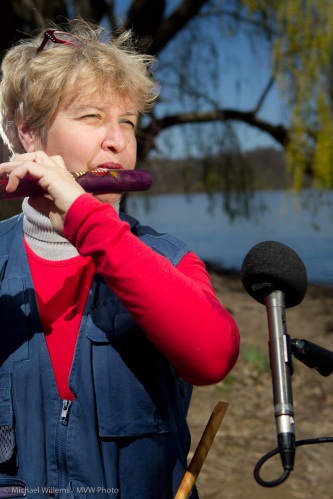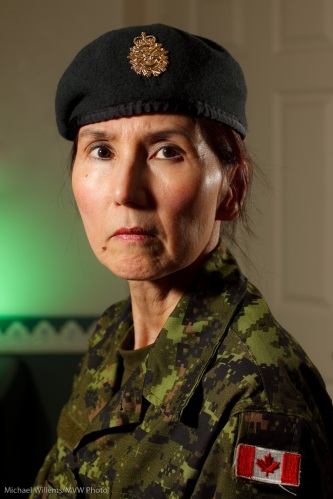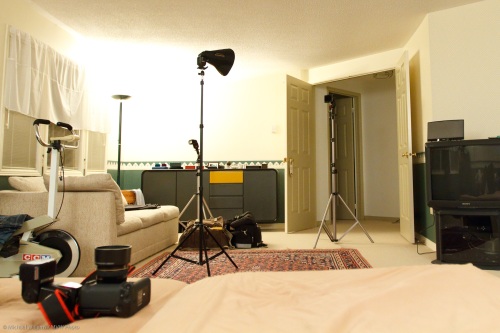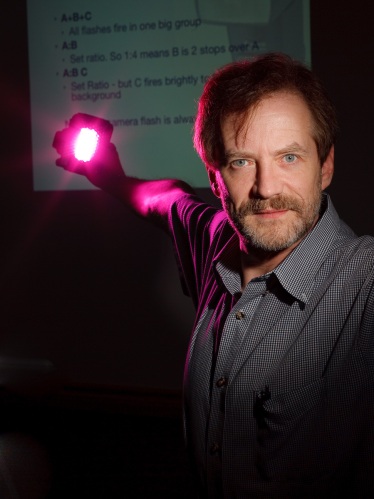Today, I am sharing a quick product shot.
Here’s the shot, of my “nifty fifty”, a 50mm f/1.4 lens:
And here’s how I shot it:
- I used a Canon 5D camera on manual at 100 ISO, f/4 and 1/125th second.
- The lens was on a table with a white sheet of Bristol Board underneath.
- The background was an improvised white background (I used a reflector).
- I used a 430EX flash with a Honl grid, diagonally above the lens, as the main light. The grid causes the dropoff from the centre.
- I used a 430EX flash with a Honl blue gel and a Speed Gobo to illuminate the background.
- I used e-TTL to fire the flashes, from my 7D’s pop-up flash (the 7D will support this, like Nikon cameras. On other Canon cameras I need to use a 580 EX flash on the camera to drive the remote flashes).
- I set a flash ratio of 8:1 a:b, where A was the main flash and B was the product flash.
All of which looked like this:
Simple. It only took a few minutes to set up, which is good since I was tired.
One tip: when shooting this type of product clean it well using a soft brush, or else you will spend hours in Photoshop or Lightroom aftereard, cleaning dust.



